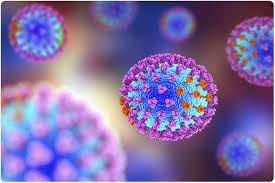Influenza
Risk factors of the Condition
Influenza results after infection by the influenza virus. There are several factors which predispose an individual to develop the disease. To start with, infants and children less than five years of age are prone to the virus since their immune system is not entirely developed. The complications tend to be more than order children especially if they have chronic conditions such as diabetes or asthma (Harper & Bridges, 2009).
Adults older than 65years of age are also at increased risk of influenza since the immune system weakens with age. Individuals working or living in high densely populated areas such as army barracks, college dormitories, hospitals and refugee camps are also at risk due to a close interpersonal contact. In case an individual has influenza, there is an increased possibility of the spread of the influenza virus (Fukuda & Singleton, 2012).
Additionally, people with a weakened immune system such as those with diabetes, asthma tend to develop the disease because their body is unable to fight off the flu virus. Pregnant women are prone to illnesses since their bodies undergo various changes during the pregnancy period which affects their ability to fight infection (Harper & Bridges, 2009). The use of certain medications, which impairs the immune system, such as steroids by individuals who have undergone organ transplant is also associated with the influenza virus.
Goals and Objectives
Prevention and containment of influenza can be managed through various ways. Vaccination is known to be the best method of prevention. The Center for Disease Control in 2014 recommended that children under the age of six months and those individuals who are at risk such as health care workers, caregivers, and patients above 64 years be immunized annually. There should also be routine vaccination of people working in hospitals and facilities which offer long term care. Chemoprophylaxis using antivirals such as amantadine can help contain an outbreak. This should be done in case an outbreak is suspected; chemoprophylaxis should be administered to risk groups (Harper & Bridges, 2009).
Also, implementation of hand hygiene, cough etiquette, screening and isolation of infected individuals, adherence to set standard precautions for all patients and implementation of environmental infection prevention measures are some of the ideas that can be put in place to help in prevention of influenza. Measuring vaccination coverage will help in evaluation of existing prevention programs (Fukuda & Singleton, 2012). The use of protective gears, for example, for any contact with a potentially infectious material and the change of gloves, when handling different patients. Wear a gown when handling infected patient to avoid coming into contact with body fluids such as respiratory secretions (Harper & Bridges 2009).
Limiting access and movement of patients within the facility to avoid environmental infection control programs should be put in places such as disinfection and cleaning of frequently touched surfaces and objects in the health care setting. Waste products should be discarded according to layer down policies (Harper & Bridges, 2009). Also, proper planning by the health cares facilities during an outbreak is important.
Health facilities should come up with policies regarding infection control in care settings, health care and social settings, case-finding, treatment and management protocols regarding influenza (Fukuda & Singleton, 2012). Proper implementation of routine laboratory biosafety, proper specimen handling and hospital infection control policies. There should be a clear definition of an outbreak and protocol for management of the influenza virus in preparedness of an outbreak.
This can be managed through initiating a surveillance strategy to help identify infected persons or potential outbreaks through disease testing (Fukuda & Singleton, 2012). Also, it can be done through educational programs to help review laid down protocols for transmission, manifestation, and treatment of the disease. Healthcare facilities should ensure proper disease surveillance. These facilities should also ensure adequate availability of all materials and pharmaceuticals that may be required in the management of influenza outbreaks.
Educational Interventions
All healthcare providers should receive training concerning influenza disease, including symptoms, transmission, and prevention during orientation to a health care setting. There should be provision of updates to these healthcare providers through seminars and ongoing training programs (Harper& Bridges, 2009). Health care providers should be educated on prevention aspects which include proper use of gloves and gowning.
Health care providers should be given current protocols during seminars and conferences. Furthermore, media campaigns on vaccination of influenza should be done to ensure information reach targeted individuals. The society should be informed about the disease and the benefits of vaccinations to ensure that even the risk groups can take the necessary measures particularly the children and the aged (Fukuda & Singleton, 2012).
Health Promotion Behavior Theory
Health belief model would be the fittest for curbing and treating influenza affected individuals. This is because they will tend to seek medical attention in case of flu symptoms in case they understand the severity or seriousness of the disease basing on the knowledge they have acquired through training (Rosenstock, 2012).
Also by understanding that they are at risk of influenza, they will tend to seek medical attention when certain symptoms are experienced. When these individuals understand the benefits of immunization, they will tend to go for it.
References
Fukuda, K. & Singleton, J. A. (2012). Prevention and control of influenza. Recommendations of the Advisory Committee on Immunization Practices (ACIP). MMWR. Recommendations and reports: Morbidity and mortality weekly report. Recommendations and reports/Centers for Disease Control, 51(RR-3), 1-31.
Harper, S. A , & Bridges, C. B. (2009). Prevention and control of influenza. MMWR Prev Control, 53, 1-40.
Rosenstock, I. M. (2012). The health belief model and preventive health behavior. Health Education & Behavior, 2(4), 354-386.
Want help to write your Essay or Assignments? Click here


